These spiders live around the Mediterranean up to Afghanistan.

They are known as large nocturnal wandering spiders hunting on tree bark rocks and on leaves.
They are also often found inside houses when coakroaches are present on which they feed.
Genus Eusparassus
| A beautiful huntsman from Greece. These spiders live around the Mediterranean up to Afghanistan. |
|
 |
|
| Eusparassus walckenaeri Picture by Lies de Nooijer | Eusparassus walckenaeri Picture by Lou van der Linde |
Genus Olios
| The common name of this spider is huntsman. She can only be found in the Mediterranean area of NW-Europe in places where there is hardly any vegetation, on hot stony places. It size varies between 9 and 17 mm. The spider is a nocturnal, fast running, hunter. |
|
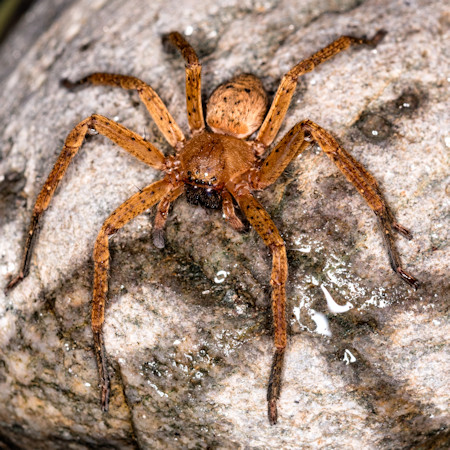 |
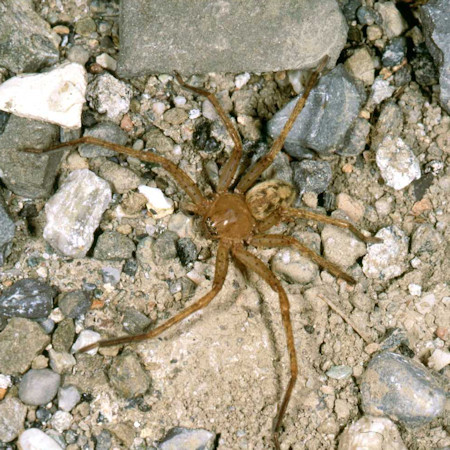 |
| Olios argelasius Photo by Guy Vanstraelen | Olios sp. from Italy Photo by Emanuele Biggi |
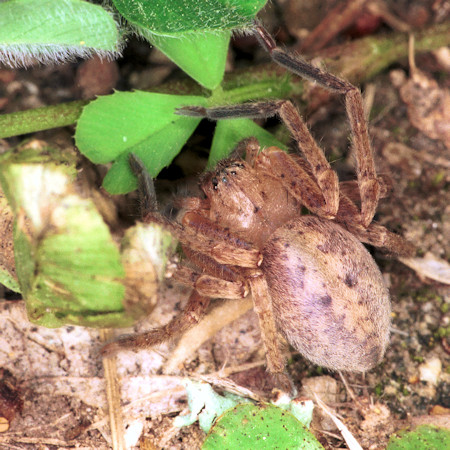 |
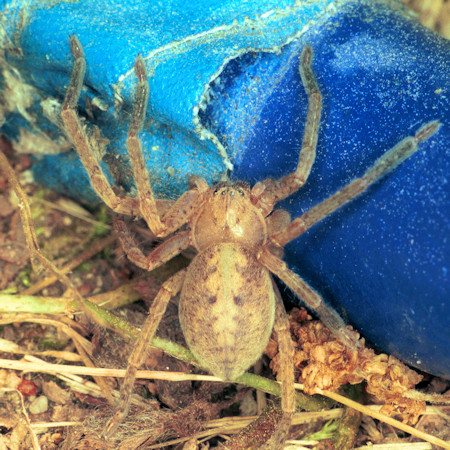 |
| Olios species female | Olios species female young |
Genus Micrommata
|
|
|
Micrommata virescens female |
Micrommata virescens male |
|
This green spider is the only European representative of a large tropical family that is also known by the name of 'banana spiders'. They have a striking appearance because of their bright green / yellow color. The adult male is different in appearance compared with the female. The female has a bright green abdomen with the cardiac mark outlined in yellow. They catch their prey in low vegetation. Its size is a 7 -10 mm for males and 10 - 15 mm for females. |
|
Micrommata virescens mating |
|
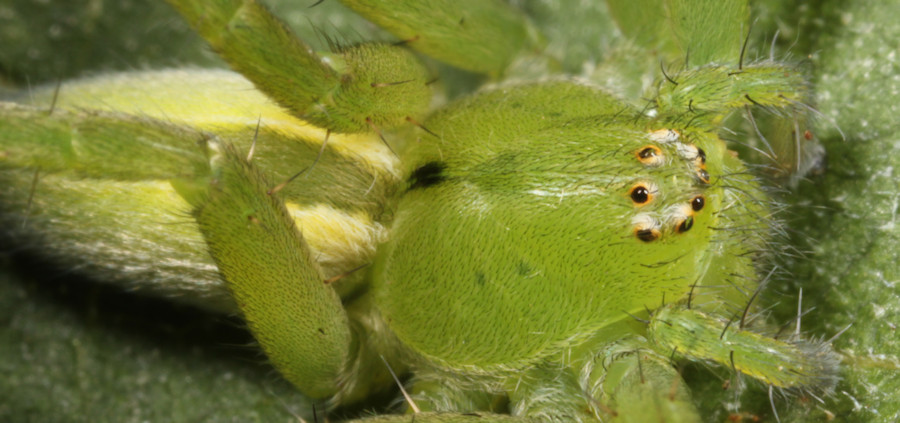 |
|
|
|
|
Micrommata virescens male |
Micrommata virescens female juvenile |
The mating pair on the picture above was found in the end of May near Perpignan in the south of France along a road in the vicinity of a brook running in a lake 100 meter further away. When trying to catch them, both were speeding through the grass without loosing grip. Eventually they were caught in a large jam jar. The first four flies that were put in the jar were caught very rapidly. Within a minute the female had three flies between her legs and the male one. The next day the male was gone with one trace, its palp. Because it was impossible to escape from the jar it must have been eaten completely. Even the hard cephalothorax could not be found. After feeding the spider with at least 10 flies during the next five days she stopped eating. At that time we were returning home. Eight days after being caught the female started to weave small threads between the oak leaf and the glass of the jar. After three days the leave was firmly locked to the glass. The next morning the spider was hanging upside down attached to a white cocoon with green eggs inside it. Three weeks later about 50 small green spiderlings were crawling inside the space of the leave. After several days some were crawling on the outside of the leave but most of them stayed inside. |
|
|
|
Left. Spider hanging upside down guarding her egg-sac
Under. Spider with her spiderlings. |
|
|
|
|
1 week old |
The mother was very thin and her green color was turned into yellow. She started accepting flies. With great ferocity she hunted down the flies that were released in her jar. Like a cat she ran after and jumped upon her prey. After 5 weeks she started to make a second cocoon. Because spiders can keep the male sperm active for a long period she could breed again. This time fewer spiderlings were born. About 20. They all survived and were released in the garden. After two months I noticed little green spiders in my garden. (below) To my surprise they were the youngsters I had released and they were in good shape. |
|
I captured one and offered it mosquitoes (below). He became colored with red, green and yellow spots. In that time, after three months in captivity the mother died in the end of August. She was in good shape and catching flies I offered her within a few seconds, but suddenly died. I cleaned her housing and transferred her growing young in her jar. I also noticed other green spiders in my house and garden. The females did not change color but remained green and yellow. The heart spot was green while the rest of the body became more yellow. The adult female has a lighter heart spot and a greener body. |
Two months old |
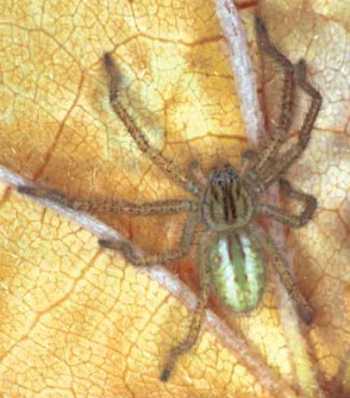 |
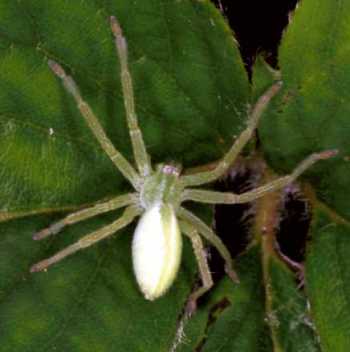 |
|
Male 3 months old |
Female 3 months old |
|
|
The male I captured is still in captivity after 5 month. It is December now and he shrunk a lot. |
| Male 4 month old | The spider died during the winter |
Ed Nieuwenhuys, 3 March 2018
2 October 2013,
8 July 2012 ,
December 7, 1999